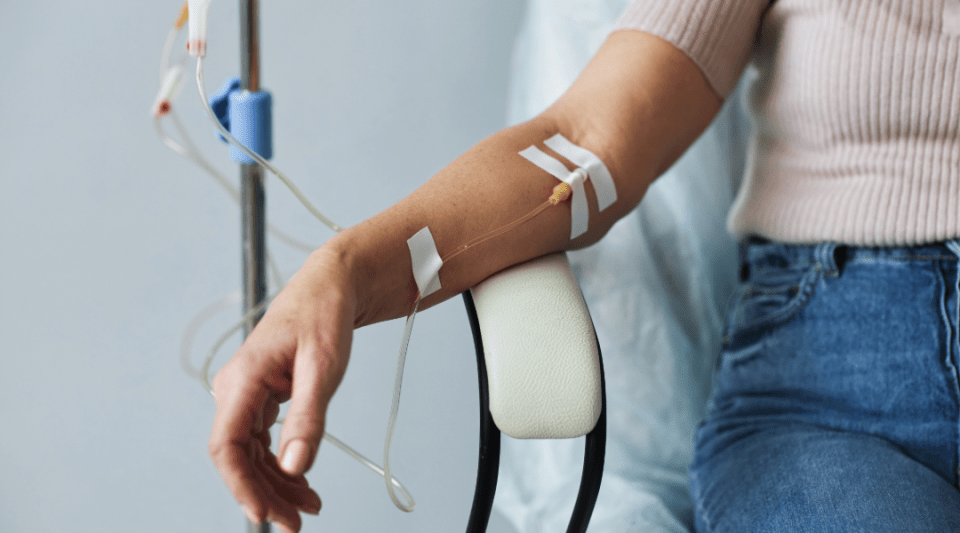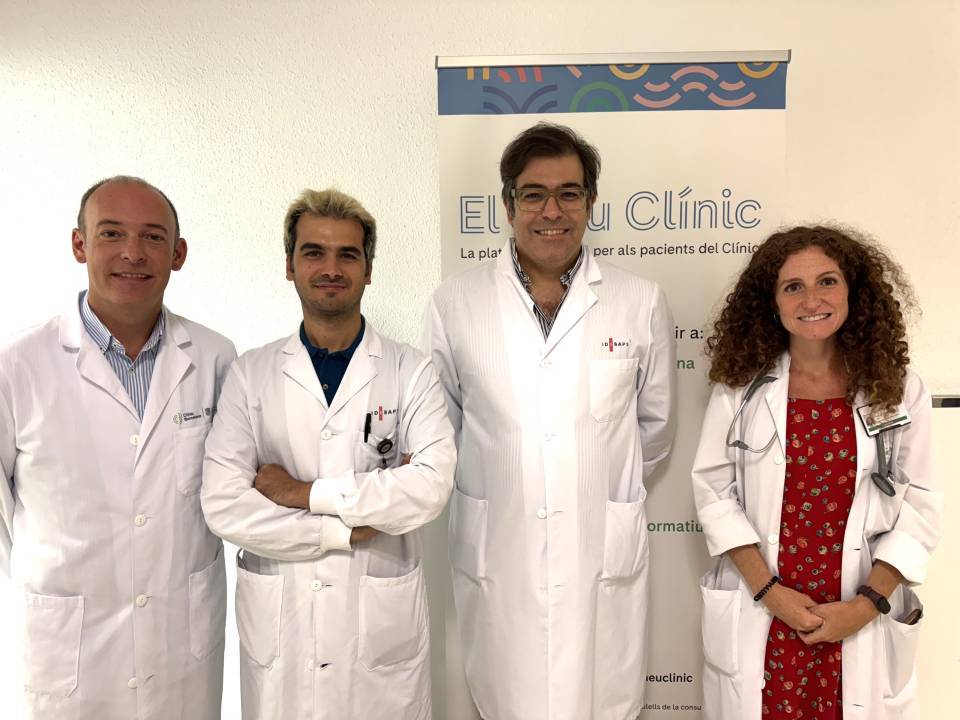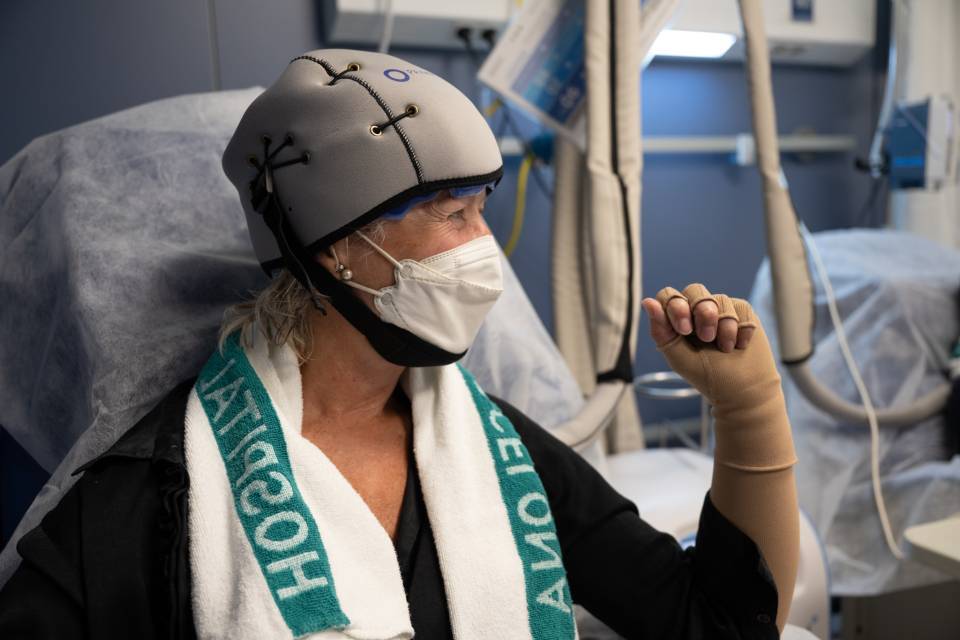28 November 2024
- What is it?
- When is chemotherapy necessary?
- Chemotherapy type
- How is it arranged?
- What preparations are needed?
- Where is it done?
- How long does it last?
- How many times do I need to have chemotherapy?
- How will I feel during the treatment?
- What are the potential complications?
- Special situations
- Team and structure
Chemotherapy type
There are different chemotherapies that can be classified according to their route of administration, the number of drugs administered simultaneously, their mechanism of action or their intention.
According to their mechanism of action, there are different families of chemotherapeutic drugs (e.g., alkylating agents, antimetabolites and topoisomerase inhibitors) that act differently on the tumour cell. In addition, it is important to mention that not all drugs have shown efficacy in all types of cancer; therefore, two people with cancer in the same organ may receive a different chemotherapy treatment, depending on the type of tumour for which they have been diagnosed.
According to its route of administration, we can divide chemotherapy into:
- Oral: The chemotherapy drug can be given in a pill, tablet or capsule form, in the same way as common medications such as paracetamol and ibuprofen. Depending on the chemotherapy selected for that tumour, it may be taken under different regimens: e.g., every day; only 3, 5, 15 days in a row; every 8, 12 or 24 hours; on an empty stomach or with meals. Don't worry, your referral team (doctors, nurses, pharmacists) will answer your questions before starting treatment.
- Intramuscular: Given by injection directly into a muscle area, such as the arm, similar to a vaccine.
- Endovenous: This is administrated directly into the bloodstream through a vein (usually in the arm) as if it were a serum. Before the first administration, the patient has to be evaluated by the oncology team's referring nurse to recommend the best method to reduce possible complications (e.g., pain, infection or extravasation). These routes of administration can be by a peripheral route, a port-a-cath or PICC (peripherally inserted central catheter), depending on the type of chemotherapy and its venous access.
- Intraperitoneal: In highly selected cancers, chemotherapy can be delivered directly to the abdominal cavity through a catheter.
It should be said that, contrary to popular belief, side effects and tolerance to different chemotherapies do not depend exclusively on the route of administration: a pill does not necessarily have fewer side effects than chemotherapy administered intravenously.
According to the number of drug substances administered in each cycle, it is classified into:
Monotherapy: Administration of a single drug in each cycle.
Combination chemotherapy: The administration of more than one chemotherapy drug. This may be on the same day or on different days within the same cycle. Sometimes, chemotherapy can be combined with other agents, such as immunotherapy or other treatments.
Finally, chemotherapy treatments can also be classified according to their intention in controlling the tumour disease:
- Curative: As its name suggests, the objective is to eradicate cancer, either by itself or administered in addition to other treatments, such as surgery or radiotherapy. This type of chemotherapy, in turn, can be divided into different subtypes, depending on when it is administered in the treatment sequence.
- Neoadjuvant: Chemotherapy is given before surgery or radiotherapy with the intention of reducing the size of the tumour to facilitate its removal; and, in turn, to check the sensitivity of the tumour to chemotherapy.
- Adjuvant: The chemotherapy is administered after radical treatment, such as surgery. Its intention is to treat possible micrometastasis (cancer cells not detectable by any imaging test) that may have remained after surgery, and to reduce the risk that the cancer will reappear.
- Concomitant: Given in conjunction with radiation therapy treatment to improve the effectiveness of radiation therapy alone.
- Palliative: Contrary to popular belief that palliative treatment is only for those patients who can no longer be offered anything else, chemotherapy with palliative intent has the ability to extend survival, even for years in some types of tumours. It is used in those patients who have been diagnosed with a tumour that has no cure in most cases. Therefore, although this type of chemotherapy does not cure, it extends survival, controls and reduces tumour size and/or improves symptoms caused by the disease (e.g., bleeding, pain or suffocation).
Substantiated information by:

Published: 15 November 2021
Updated: 15 November 2021
Subscribe
Receive the latest updates related to this content.
Thank you for subscribing!
If this is the first time you subscribe you will receive a confirmation email, check your inbox


